Minato 2-chome east district is about to be reborn now.
This area is located 1.5 km from Tokyo Station, and has been blessed with a better environment. However, from the end of the Showa era, the effects of the bubble economy and other factors caused disaster prevention and crime prevention issues, such as scattered vacant lots.
From 1995, local efforts for the regeneration of the town started, and after more than 20 years from the original plan, Minato Park opened in November 2016, and Minato 2-chome east district in November 2017 Redevelopment project building construction has been completed.
Minato Park, which overlooks the Sumida River from Minato 2-chome, has seasonal trees such as Shinmei Yoshino, Ode Mali, and Japanese enkianthus rose of sharon. It is a place to relax.
And on the sidewalk of the terrace, there is a mosaic mural about 50 meters long. This time, I would like to introduce this mural.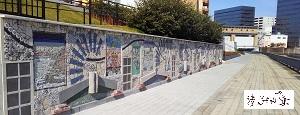
This mosaic mural is a work by the members of the Chuo Ward Welfare Center.
Ukiyo-e by Hiroshige Utagawa and Katsushika Hokusai are depicted using glass pieces and pieces of pottery, focusing on landscapes and people related to the Minato area during the Edo period.
There are about 15 designs, and there are patterns reminiscent of sparkling water and bubble grains, and shapes that seem to have shaped the large roof of guardian god in Minato and Tepposu Inari Shrine. Let's walk slowly and appreciate it.
♪ Welcome to the sidewalk museum!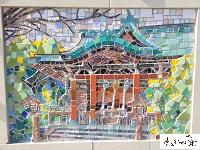
This picture is Teppozu Inari Shrine. It was founded in the Heian period 1,000 years ago. He was a local god of the land, protected the safety of water, and gathered the worship of sailors so that he was called "Edo Minato has a gunshot."
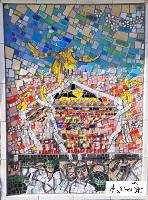
This is the scenery of the festival in Minato. Reitaisai festival of Tepposhu Inari Shrine. It is a composition full of dynamism carried by the Ujiko people with a large mikoshi with a phoenix. I think you'll hear a powerful cheer. Miyamoto Dai portable shrine is one of the largest towns in portable shrine, and the best in Japan for both dignity and tradition.
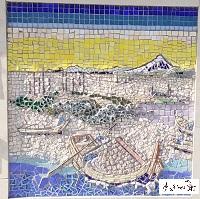
“Thirty-six Views of Mount Fuji Takeyo Tsukudashima” Katsushika Hokusai 1831 (1831)
Against the backdrop of Fuji, this is a work that captures the moment when fishing boats and boats are rowing toward Tsukuda Island, centered on Tsukuda Island, which was Ryoshimachi. Katsushika Hokusai's masterpiece, "Thirty-six Views of Mount Fuji" series.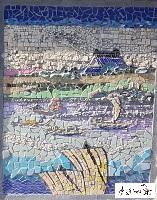
"Edo Hundred Views of Yokoshogun Tsukiji Gate Ruins" Hiroshige Utagawa 1858 (1858)
This is a work depicting a large roof of Tsukiji Honganji from Edo Minato in front of the gunpowder. The large roof of main hall was a landmark for the boat to enter Edo Minato. In fact, in 1856 (1856), main hall was destroyed by the heavy wind and rain. This picture was painted two years ago when it was rebuilt, and Hiroshige painted a large roof that was not actually in practice. It may have expressed people's wishes for reconstruction.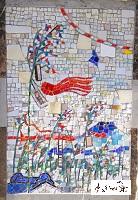
“Hundred Views of Edo Famous Views, City Prosperity Tanabata festival” Hiroshige Utagawa 1857 (1857)
This work depicts the scenery of Tanabata festival that colors the town of Edo against Mount Fuji and Edo Castle. On the roof of the Machiya, a tall strip bamboo continues forever. old calendar As July 7 near, many bamboo sellers were seen in Edo. On the day, everyone put a strip on leaf bamboo and prayed to the stars, regardless of the presence or absence of children and the poor. There are also abacus made of paper, Daifuku books, brooms, watermelons, etc. It's actually a quaint sight.
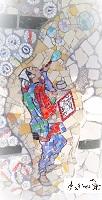
Shabon balls sold
In summer, he said that he came to sell while singing "Tamaya ~ ~ ~". Soaking soap bubbles in water and blowing thin pipes to make soap bubbles.

Dai-Kagura
Even during the Edo period, the shape changed slightly from time to time, but he sang Kouta and kyogen lively with flutes, small drums, large Wadaiko and bells, and walked around the streets of Edo every day.
In addition, there are still many designs. "Mosaic mural promenade" is a space on the riverside overlooking the glitter of the Sumida River, the brave figure of Chuo-ohashi Bridge, and Tsukuda Island on the opposite bank.
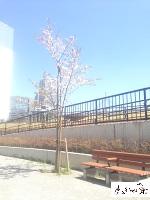
In addition, the solar lighting installed in the park is designed to secure lighting even in the event of a power outage, and on the bench, the seat surface can be removed in the event of a disaster and used as a furnace.
Why don't you take a walk and enjoy it on a sunny day?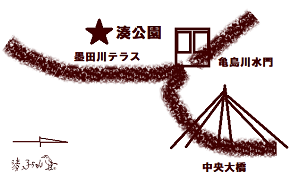
Correspondent Minato kid, Chuo-ku Tourism Association 
No. 30 January 7, 2019

